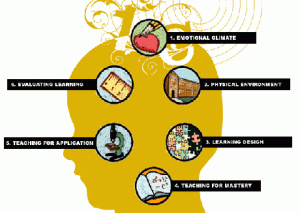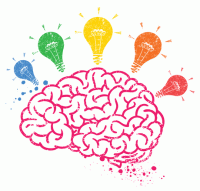Education, the Brain, and Common Core State Standards
Understanding even the basics of how the brain learns -- how people perceive, process and remember information -- can help teachers and students successfully meet the requirements of the Common Core State Standards (CCSS). This initiative aims to establish a relatively standardized knowledge base among all students, alleviating the background knowledge gap. It's designed to promote critical, divergent thinking, equipping students with information relevant to the real world and the ability to use it.
Sounds great. But what does that really mean, in practice, for teachers? How do you teach someone to think critically?
Dr. Mariale Hardiman, co-founder and director of the Johns Hopkins University School of Education's Neuro-Education Initiative, recommends starting at the top: with the brain. "It seems rather obvious -- after all, learning does occur in the brain, but all teaching does not result in learning, so while all learning is brain-based, all teaching is not," clarifies Hardiman. The Brain-Targeted Teaching Model, developed by Hardiman, organizes key educational theories into a single framework, combining neuroscience research with teachers' and students' feedback.

While the model pre-dates CCSS, teachers practicing Brain-Targeted Teaching report having an easier time meeting CCSS objectives. Jeremy Mettler, a high school social studies teacher explains:
So what does it look like in practice, and how can you employ Brain-Targeted Teaching methods in your classroom right now?
Set the Stage
Brain Target 1: Emotional Climate
Once the brain -- in particular, the amygdala -- has established a safe environment, the brain slips into its secondary mode, which is learning. "That emotional connection really sets the stage for everything, " notes Hardiman. Vicky Krug, a professor at Westmoreland County Community College, routinely invests 3-5 minutes checking in with her students at the beginning of each class.
Brain Target 2: Physical Environment
Aesthetics matter. How a space makes us feel matters. Classrooms are no different. Teamwork and collaboration benefit from table and chairs grouped together. Regularly changing visual displays taps into the brain's need for novelty. Scent impacts emotion and memory. Elementary teacher Kelly Murillo purchased a humidifier and aromatherapy oils for her classroom after learning that scents such as orange and lavender reduce anxiety.
Context and Relevancy
Brain Target 3: Designing the Learning Experience
The brain is designed to look for patterns, associations and connections. Giving the big picture (i.e. showing how concepts connect, building on previous knowledge, the overall purpose in the real world) leads to a deeper understanding and retention. One such example might be using Google Earth and Google Maps to navigate the city of Madrid in Spanish class. This would add a sense of practical experience to learning prepositions of place, vocabulary, and the imperative mood.
Brain Target 4: Teaching for Mastery of Content, Skills and Concepts
Repeating information is key to committing it to memory. But instead of rote memorization, give students different ways play with and manipulate the information in order to move it into long-term memory. One high school physics teacher included pre-recorded clips of dancers and figure skaters spinning in circles to explain angular momentum. It's a simple equation: different plus fun equals memorable.
Go Beyond the Information Packet
Brain Target 5: Teaching for the Extension
Placing classroom activities and information in the context of the real world moves instruction along a more divergent path, away from the typical solitary correct answer. It allows educators to direct discussions along the path of "Yes, and . . ." While the element of uncertainty can be disconcerting for teachers and students alike, rarely is there a single solution to real-world problems.
Brain Target 6: Evaluating Learning
Change the typical "teach, test and move on" approach to "teach, revisit and test." Building frequent intervals of revision into the teaching process, prior to testing, increases retention of material. Give students specific feedback -- why a response is wrong, how their work can be improved. Ensure that your feedback is timely, "It's like scolding a toddler for a transgression that happened two days ago. The incident is long forgotten and the feedback is irrelevant, " says Murillo.
Hardiman reminds teachers that brain science research indicates how the essence of learning is about biological changes; therefore, focusing on the science of learning must be central to education discussions. It's not just about accountability.
How you perceive your students matters. How do you recognize your students as learners? How do you communicate high expectations and confidence in their abilities?
